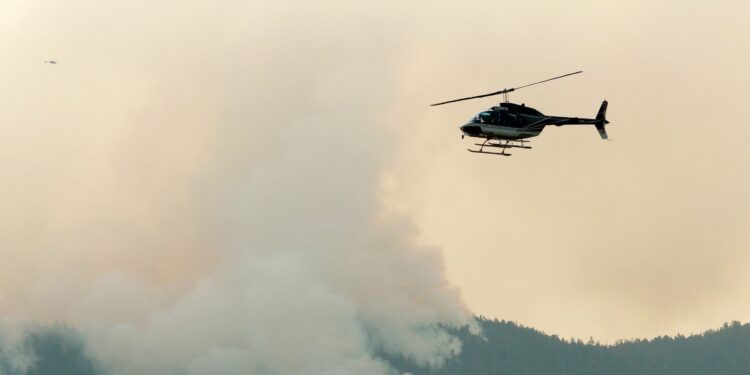More than 700 active wildfires are currently burning across Canada, with approximately two-thirds classified as out-of-control, triggering widespread air quality alerts both domestically and in parts of the United States.
The wildfires, driven by prolonged drought conditions and record-high temperatures, have devastated large swathes of forest in provinces including British Columbia, Alberta, and Saskatchewan. Smoke plumes from the blazes have spread hundreds of miles, prompting health warnings from Canadian and American authorities.
Widespread health risks from smoke
Environmental agencies in Canada and the US have issued severe air quality advisories, urging vulnerable populations—such as children, the elderly, and those with respiratory conditions—to limit outdoor activities. Dense smoke has significantly reduced visibility in urban centres, and hospitals in affected regions report increased cases of respiratory distress.
In cities like Vancouver and Calgary, particulate matter levels have soared beyond safe limits, marking some of the worst air quality episodes in recent history. Similarly, US states such as Washington, Montana, and North Dakota have experienced smoky conditions, leading to travel disruptions and school closures in affected areas.
Firefighting efforts challenged by conditions
Fire crews continue to battle the extensive wildfires, but dry weather, gusty winds, and rugged terrain hamper containment efforts. The Canadian Interagency Forest Fire Centre has mobilised additional resources, including aircraft and personnel, to assist in fire suppression.
Officials warn that the risk of new ignitions remains high as heatwaves persist, and the potential for wildfires to spread rapidly poses ongoing threats to communities, infrastructure, and wildlife habitats.
Environmental and economic impacts
The scale of the wildfires has raised concerns about long-term environmental damage, including loss of biodiversity, soil erosion, and increased carbon emissions. Economically, the fires have disrupted transportation routes, forestry operations, and tourism activities across affected provinces.
Government agencies are coordinating evacuation plans and emergency responses, with financial aid being made available for displaced residents and recovery efforts.
Climate change under scrutiny
Experts emphasise that these unprecedented wildfire seasons are symptomatic of broader climate change trends, linking rising temperatures and altered precipitation patterns to increased wildfire frequency and intensity.
Calls for enhanced forest management and climate mitigation strategies are growing louder as policymakers seek to address the root causes of these recurring disasters.
Continued vigilance necessary
With hundreds of fires still active and many out of control, authorities urge the public to stay informed through official channels and comply with safety directives. The evolving situation underscores the urgent need for coordinated responses to safeguard public health and protect natural resources.
REFH – Newshub, 6 August 2025



Recent Comments